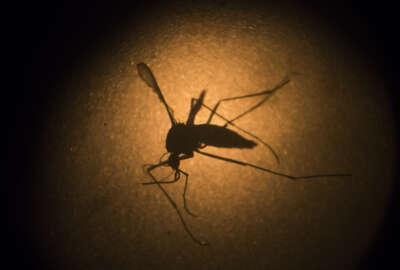
Disease detectives: federal workers on the front line of epidemics
Epidemic Intelligence Service officers serve as the disease detectives when an outbreak happens.
Disease outbreaks can strike at any moment, and when that happens the Epidemic Intelligence Service is one of the first on the scene.
As part of the Public Health Service, these federal workers are often called the disease detectives.
Since 1951, EIS has been identifying the causes of disease outbreaks, recommending prevention and control measures and implementing strategies to protect those in affected areas.
More recently, EIS officers have worked on stemming the tides of Ebola in West Africa and Zika in Latin America.
“Every EIS officer for the last two classes was in some way involved with the Ebola outbreak,” said Chief of the EIS Program Capt. Joshua Mott in a March 25 interview with Federal News Radio. “Some of them went and were directly involved in contact tracing and implementing control measures in West Africa or working on investigation cases that were imported here in the United States.”
Other EIS officers used behavior science skills to ensure local West African villagers were accepting people who no longer had Ebola back into their villages or conveying the need for proper and safe burials for those who died from Ebola.
In 2016, EIS officers, particularly those who speak Portuguese and Spanish, are determining the scope of impact of the Zika virus infection.
While EIS officers are involved in high profile investigations like Ebola, they also respond to less publicized epidemics across the nation.
“Most of what we do is protecting our domestic population through routine outbreak investigations on a day-to-day basis whether it’s HIV and injection drug users in Indiana or whether it’s the particular health needs of refugee populations that come into our country or hospital associated outbreaks of different diseases…or Legionnaire’s outbreaks in New York City. These things are happening all the time,” Mott said.
EIS officers, who serve in two year stints, are called upon by the federal and state governments or international bodies to investigate epidemics.
That can range from something as big as Zika, to something very isolated.
Each year the Centers for Disease Control selects about 80 officers. The 2016 class has 37 physicians, two nurses, 10 veterinarians and 30 nonclinical doctoral scientists.
“We have a mix of skills. Some are very adept at working in the clinical setting because that’s their background and so we provide them with more of the epidemiological investigation training so that they can use those clinical skills, say for a hospital associated infections outbreak in order to quickly diagnose the problem and recommend solutions,” Mott said. “In other cases we may have doctoral scientists that are more quantitatively oriented that are stronger with databases and they may be more adept… at leveraging all the different kinds of data that are available to us these days.”
During outbreaks officers go in and confirm problems and then implement logical and scientific methods rapidly to determine who is at risk and how to stop the infection.
That can include doing surveys, taking samples, meeting those exposed to the disease and analyzing medical records. The officers also test the environment.
“Depending on the type of outbreak we have to look for different sources of information that may be relevant to understanding the scope of the problem,” Mott said.
As for the officers, the job can be stressful when deploying out to unknown areas that can possibly be dangerous. Mott said that’s why people sign up.
“It attracts people that want to be in that context,” Mott said.
Copyright © 2025 Federal News Network. All rights reserved. This website is not intended for users located within the European Economic Area.
Scott Maucione is a defense reporter for Federal News Network and reports on human capital, workforce and the Defense Department at-large.
Follow @smaucioneWFED





